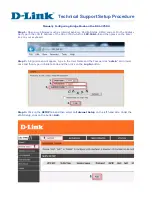
D-Link Unified Access System
Software User Manual
02/15/2011
Page 24
Document 34CS3000-SWUM104-D10
Single Unified Switch Deployment
When you deploy a D-Link Access Point, the D-Link Unified Switch can automatically detect the AP and assign a default
profile, which includes automatic RF channel selection and automatic power adjustment.
Figure 2
shows a deployment with
one D-Link Unified Switch that manages three D-Link Access Points.
Figure 2: Single Unified Switch with Layer 2 Roaming Support
When the APs are on the same subnet and have the same SSID, wireless clients can seamlessly roam among the three
APs with no interruption in network access. The client keeps the same IP address and does not need to re-authenticate when
it moves into the broadcast area of a different AP. Configuration changes to the APs are managed by the switch
simultaneously or on a per-AP basis.
Peer Unified Switch Deployment
To support larger networks, you can configure up to four switches as peers, which increases the size and range of the WLAN.
Figure 3 on page 25
shows a D-Link Unified Access System deployment that utilizes three peer Unified Switches. Each peer
Unified Switch can manage up to 48 access points (DWS-3024 and DWS-3026) or 24 access points (DWS-3024L). The
Unified Switch and the APs it manages do not need to be on the same subnet.
AP 2
AP 1
AP 3
Terminal with Direct
Remote Management
Station
Unified Switch
Serial Connection
L2 Network
















































